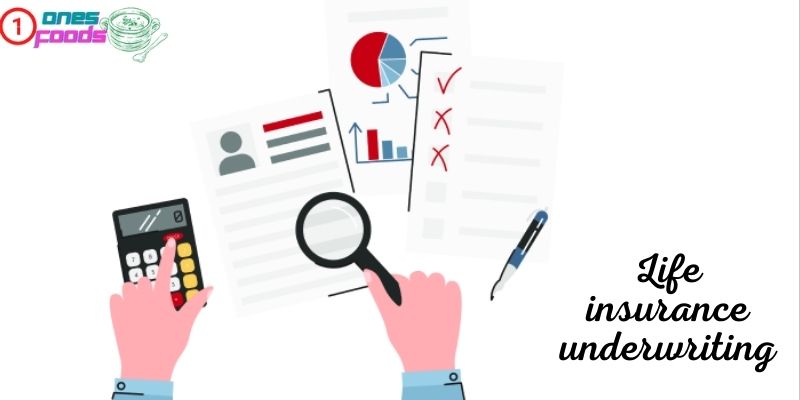What is Life Insurance Underwriting?
Estate planning is a difficult procedure. One stage in that process is purchasing life insurance, but it entails more than just selecting an insurer and signing up for coverage. Underwriting occurs when you apply for insurance coverage. To ascertain whether you are insurable with the organization, the underwriting procedure may be quick or lengthy.
Additionally, at this moment, premiums are determined according on your individual conditions. Shopping for life insurance should take into account the underwriting procedure because every company is different and these variations may have an impact on your premiums and eligibility. The Life insurance underwriting procedure and how it may affect your application are outlined in onesfoods.com‘s guide.
Contents
What is life insurance underwriting?

Insurance companies classify applicants for life insurance based on a number of criteria throughout the underwriting process. Your age, gender, and medical history are among the rate factors that underwriters take into account when assessing risk. For instance, if you smoke, your rates will probably be greater than those of someone who doesn’t. Your rating variables and determined risk level determine the cost of your insurance.
How long is the Life insurance underwriting process?
Life insurance application and underwriting procedures often involve several steps and take two to eight weeks to complete. If your potential insurer has any inquiries or needs to wait for a response from your doctor, it can take longer. But a number of life insurance companies provide rapid underwriting for no-medical-examination plans, and some companies even provide same-day approval.
The application
You fill out an application to start the procedure. It might require some time and consideration. It includes details about your behaviors, such as whether you smoke, how much you drink, and whether you exercise frequently, in addition to basic health data like your height and weight. Additionally, it will inquire as to whether you have a family history of any illnesses; for example, if cancer runs in your family, be sure to mention it in the relevant area. A lot of applications ask you about your COVID-19 past. Even while COVID shouldn’t affect your eligibility, it might affect rates if the virus has long-lasting impacts on you.
In addition to details about your occupation and leisure activities, the application may also contain financial data. The insurance provider is looking to see if you have any dangerous habits.
Medical exam and statement

The following step is a free medical examination for you. Remember that guaranteed issue Life insurance underwriting, which has no health requirements, is exempt from this phase. There can be additional no-medical exam rules as well.
If a medical examination is required as part of your application, you can either go to a lab to perform it or arrange for a nurse or medical technician to visit you at home or at work. This will confirm the initial details you provided on your application, such as your height and weight. It will also take your vital signs—such as your pulse and blood pressure—and likely include a blood and urine test to look for drug usage.
The purpose of this is to assess your health. Your classification may be reduced or you may be denied coverage if the examination reveals that you are physically unwell or have prospective health problems, such as high blood pressure, obesity based on your body mass index, or any number of other physical disorders. The underwriter might request an attending physician statement from your doctor after the medical examination. The ideal person to ask about your health is your doctor, who can also elaborate on any results from the physical examination.
A prescription check is one of the last processes in the medical element of Life insurance underwriting, and it verifies any information you’ve provided about any short-term or maintenance medications you take. The Medical Information Bureau, a non-profit trade organization that can confirm or refute medical data obtained up to this point, will also be checked by the underwriter.
Analyzing the information
Your insurer’s underwriter will now establish your final rating using all the data that has been gathered. Traditionally, they will look at an actuarial table as their initial step. This paper provides information about life expectancy, or the likelihood that you will pass away at a certain age.
The actuarial table’s data can be broken down by age, gender, and body mass index (BMI), which also considers your height to weight ratio. The underwriter can determine the likelihood that you’ll pass away while the coverage is in effect using this resource. Your premium will probably be higher the higher that probability is. Since permanent (whole) Life insurance underwriting policies endure for the entirety of the policyholder’s life, as long as premiums are paid, they are typically more expensive than term policies.
Your insurance classification

After considering everything, your underwriter will assign you an insurance classification rating. In order of best to worst, the following five categories for Life insurance underwriting policies are available to you:
- Preferred Plus or Preferred Elite: This indicates that your health is superb, that your height to weight ratio is ideal, and that you have few to no unhealthy behaviors.
- Preferred: This category is for those in good health who do not meet the requirements for preferred plus or elite. You may have a minor health problem, such as high blood pressure or high cholesterol, if you experience this.
- Standard Plus: You’ll still be able to buy a policy, but there might be some reservations due to your medical history or a history of disease in your family. As opposed to if you were in one of the higher categories, your Life insurance underwriting costs will probably be greater.
- Standard: This is the group into which the majority of people fall. Similar to Standard Plus, you may still be able to purchase a coverage with this categorization, but the premiums will probably be higher.
- Ratings that are below average use a different classification scheme called “table rating.” You will either be allocated to an insurance with high premiums or be denied coverage depending on how you perform in that system. This is done to take into account if you have a complicated medical history or other circumstances that make you more difficult to insure. If this describes you, you might want to look into no-exam Life insurance underwriting.



